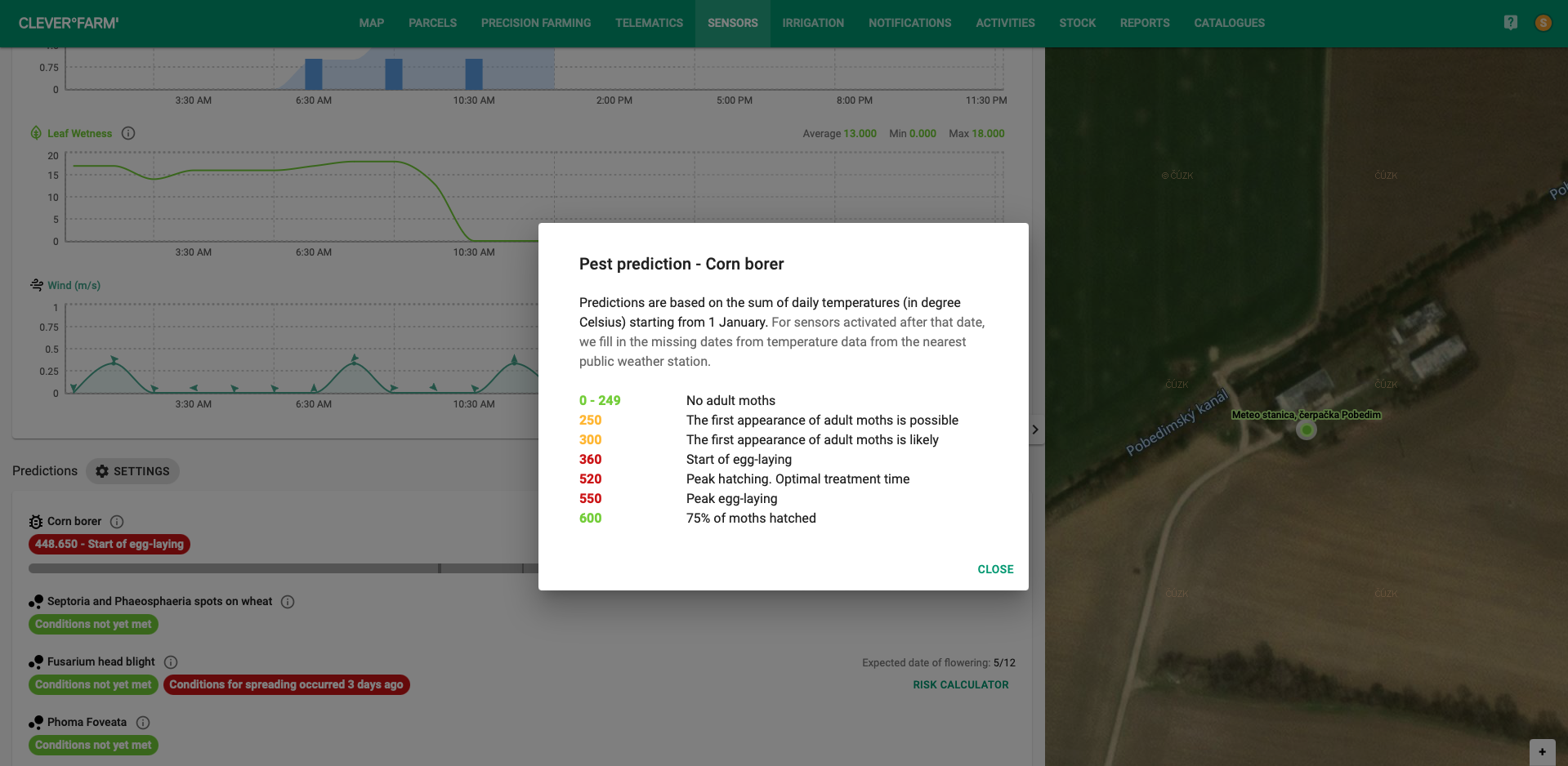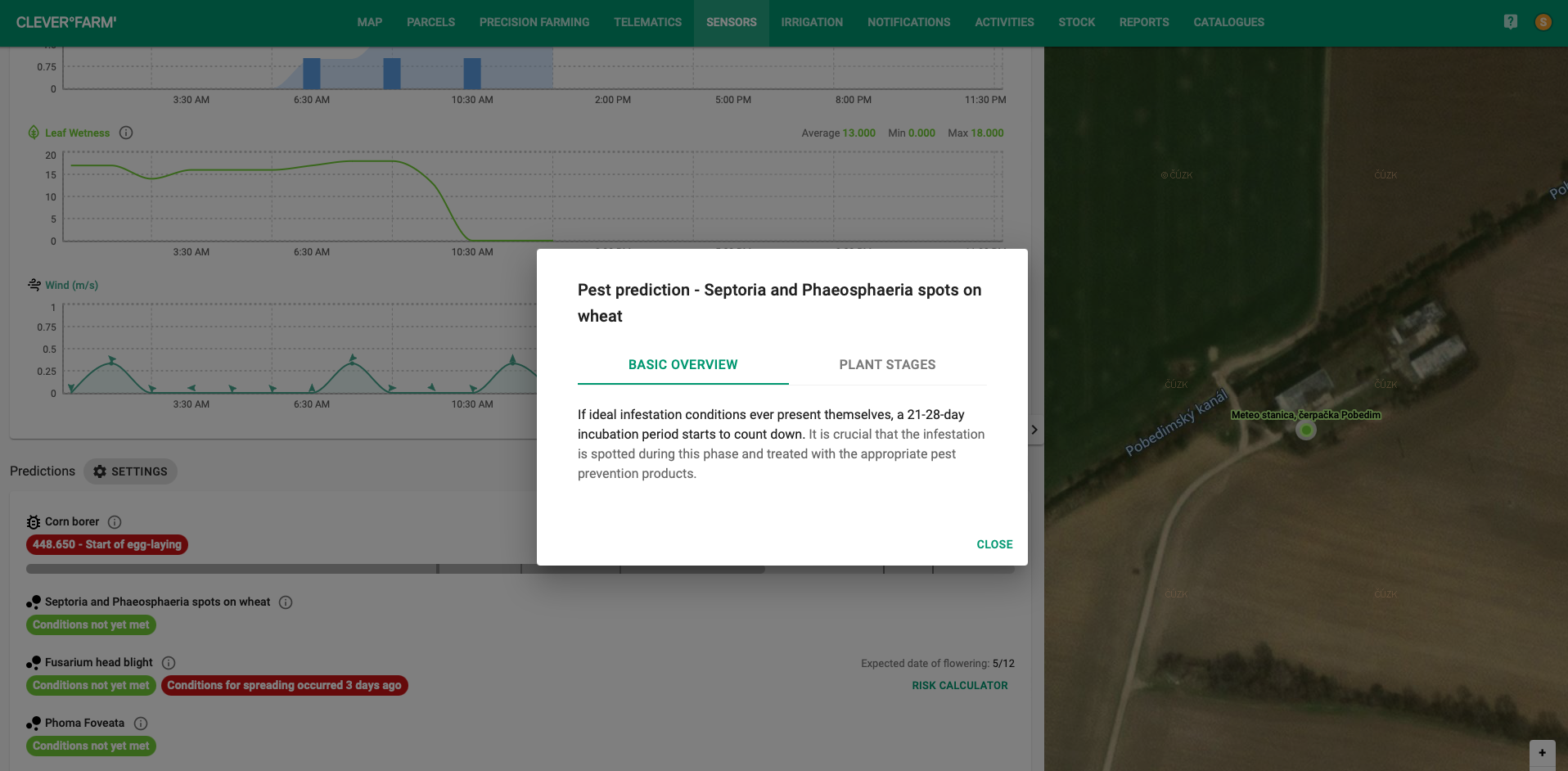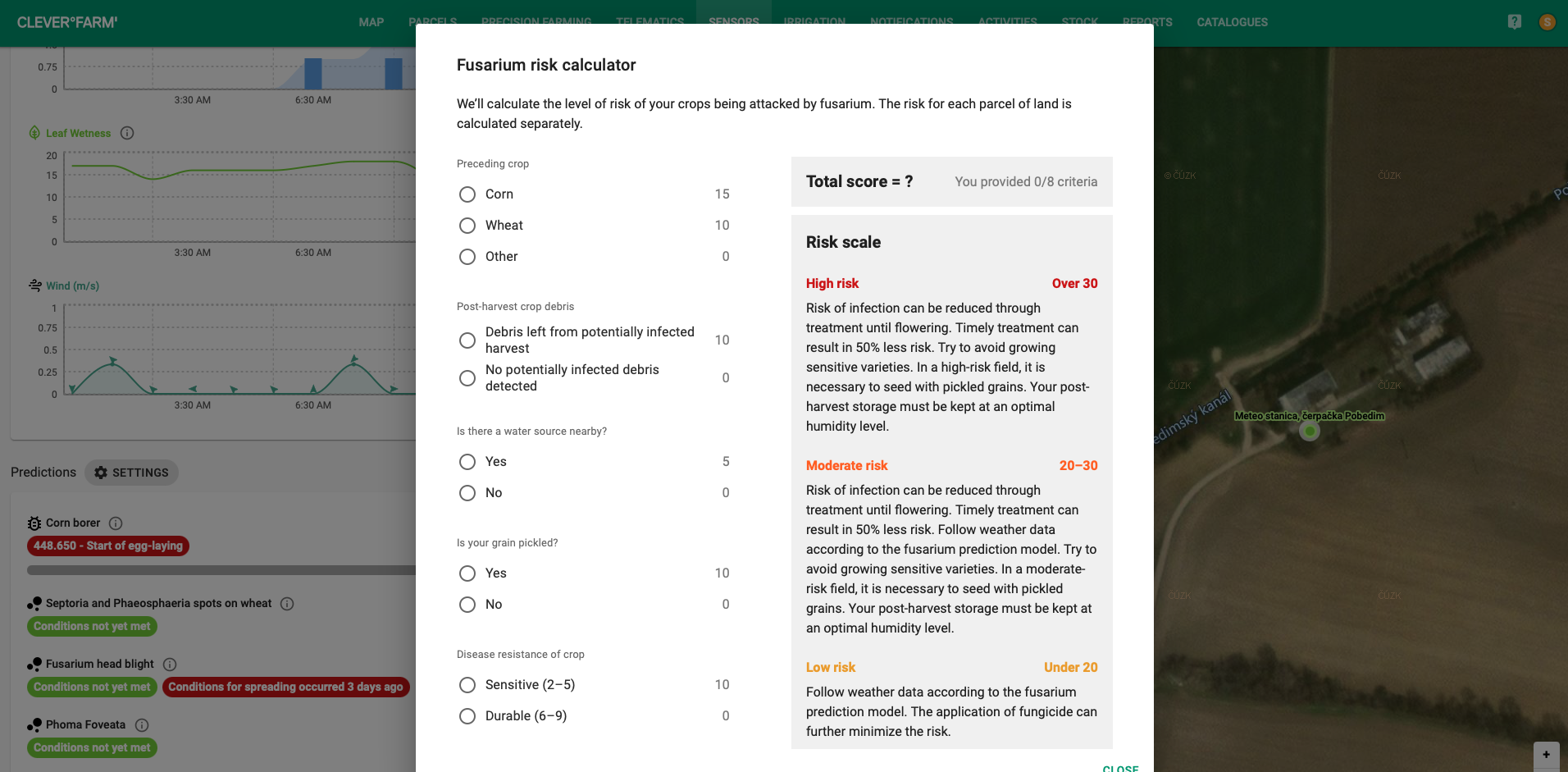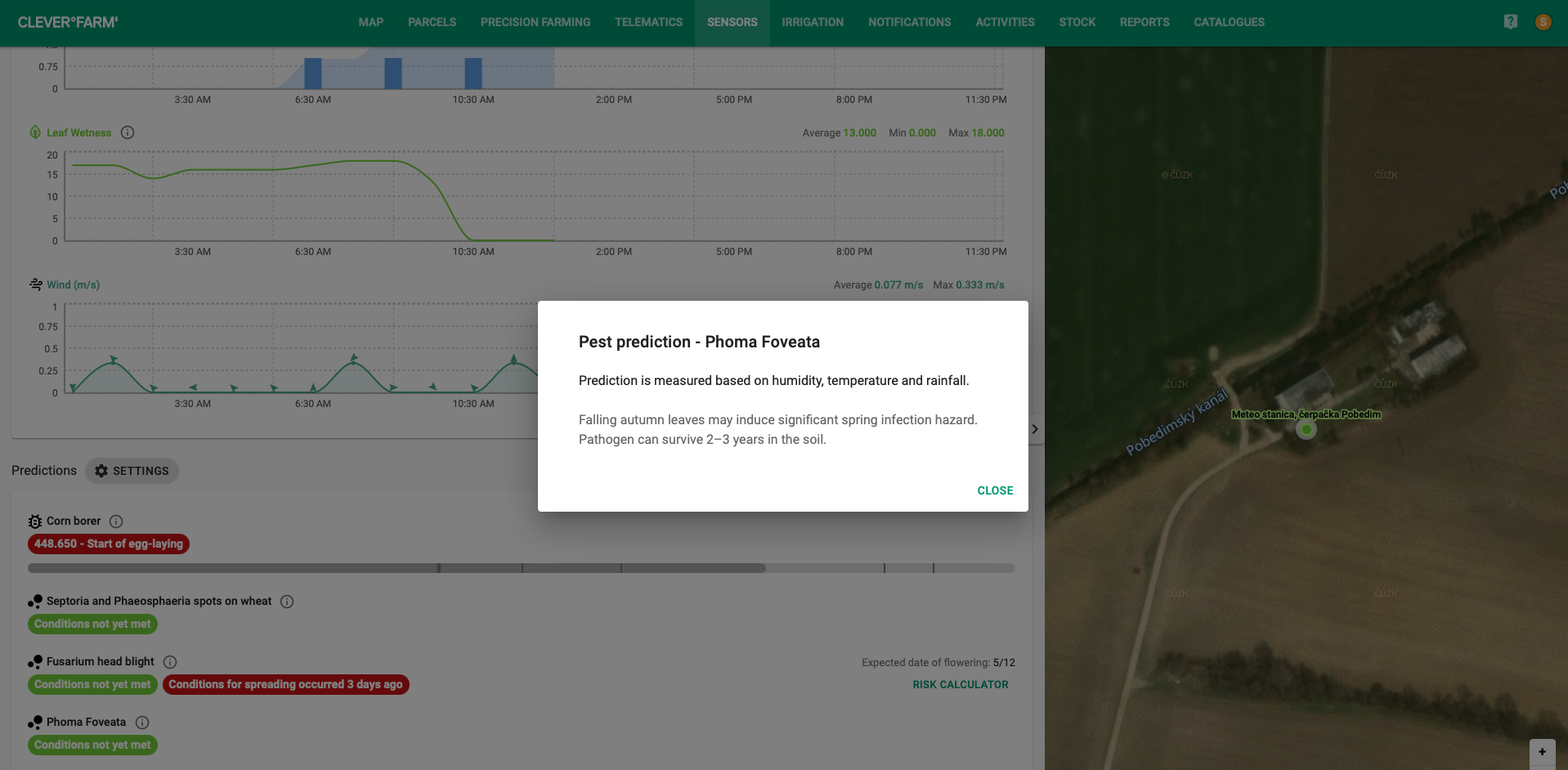Prediction of pests and diseases
Based on the measured values from our sensors, we can predict the occurrence of the following pests and diseases:
- corn earworm,
- corn earworm, corn rootworm and corn rootworm,
- wheat ear fusariosis,
- foma rot.
The probability of occurrence of pests and diseases is shown in the application by the following icons on the sensor detail.The icon is coloured according to the probability of occurrence and also shows the value together with a legend about the stage of development.

Fig. 1: Icons showing disease and pest occurrence
The prediction is automatically calculated for each weather station placed. The optimal location of the weather station for measuring the values entering the prediction model is at a height of two meters above the ground. If the sensor is placed indoors or in a greenhouse, the prediction has no predictive value.
Corn borer
In this case the prediction is calculated not only for each weather station placed but also for the crop sensor. The historical trend of measured temperatures since the beginning of the year enters the calculation model. If the temperature is not available in a certain period, the values from the nearest commercial weather station are added.

Fig. 2: Developmental stages of the corn earworm
Spotted and chaff borer
Also known as septoria and phaeospheric mottle of wheat. Predictions are calculated for each weather station with a moisture sensor placed.

Fig. 3: Speckled and chaff borer
Fusariosis of the ear of wheat
Predicting the occurrence of fusariosis requires measurements of air temperature, leaf wetting and rainfall.
To more accurately predict the incidence of ear fusariosis, you can calculate the risk level using a risk calculator.

Fig. 4: Risk calculator
Fom rot
Based on moisture, temperature and rainfall, we can predict foma rot of Brassica (rape).

Fig. 5: Foma rot
